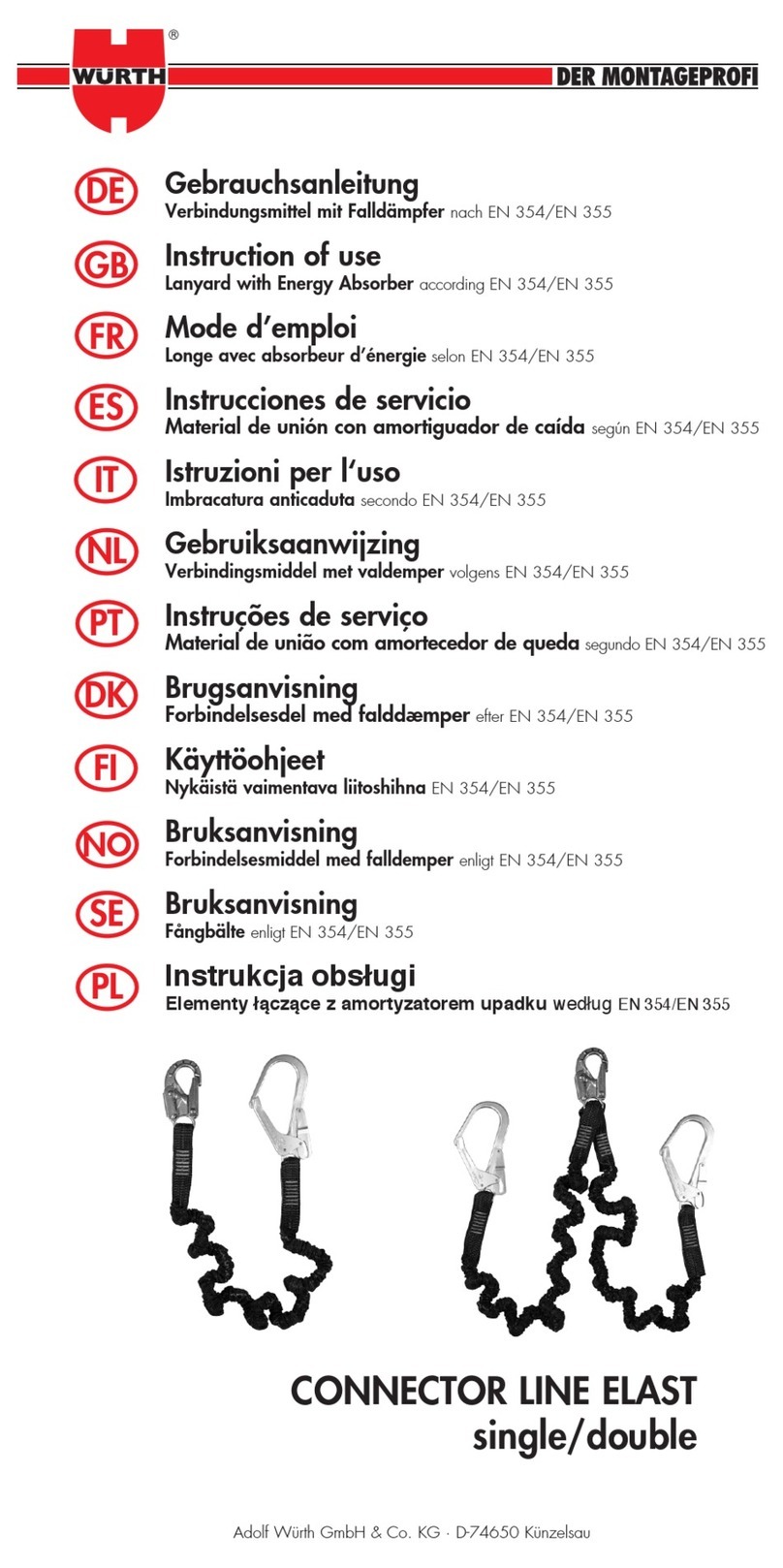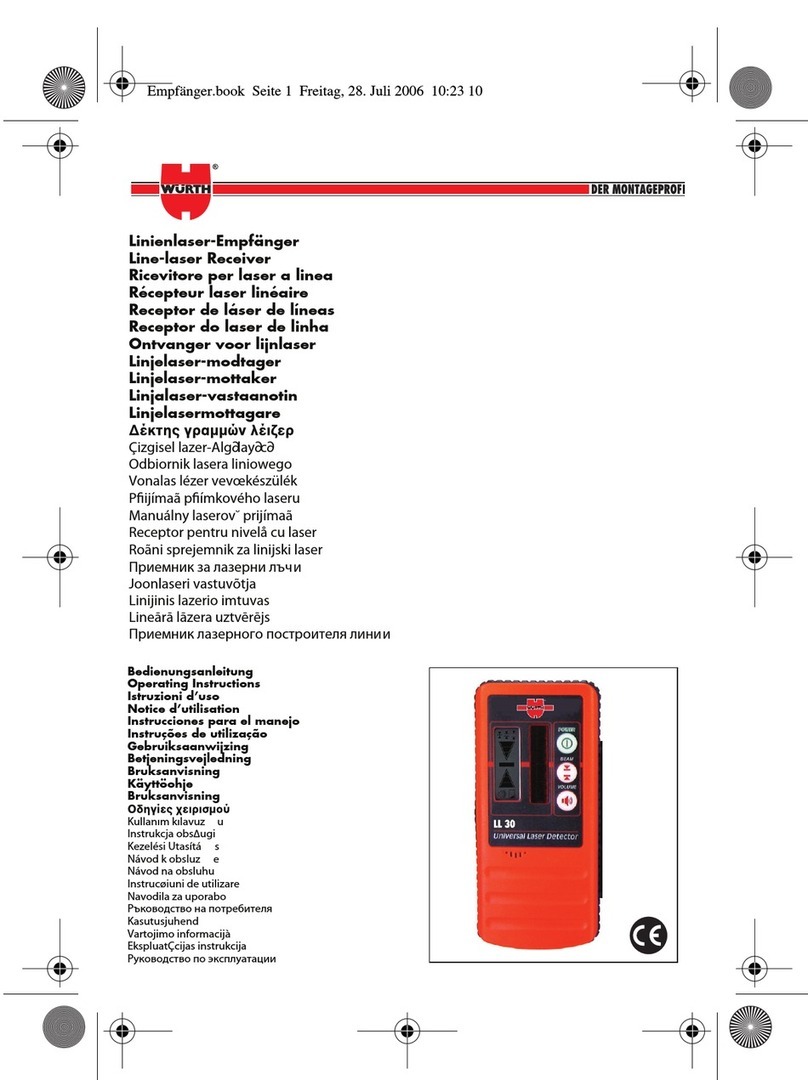
9
Signalisiert der Leuchtring 1beim Aufsetzen auf den
zu untersuchenden Untergrund keine Messbereit-
schaft, kann das Messwerkzeug den Untergrund nicht
richtig erkennen.
•Drücken Sie so lange auf die Taste 10, bis der
Leuchtring grün leuchtet.
•Wenn Sie anschließend einen neuen Messvorgang
starten und das Messwerkzeug auf eine andere
Wand aufsetzen, müssen Sie kurz die Taste 10
drücken.
•In seltenen Fällen kann das Messwerkzeug den
Untergrund nicht erkennen, weil die Seite mit dem
Sensorbereich 12 und dem Typenschild 13 ver-
schmutzt ist. Säubern Sie das Messwerkzeug mit
einem trockenen, weichen Tuch und starten Sie
den Messvorgang neu.
Metall
Die Betriebsart „Metall“ ist geeignet, um magneti-
sche und nicht magnetische Objekte unabhängig von
der Wandbeschaffenheit zu finden.
Drücken Sie die Taste 9, um die Betriebsart „Metall“
zu aktivieren. Der Leuchtring 1und die Anzeige 4
über der Taste 9 leuchten grün.
Handelt es sich bei dem gefundenen metallischen
Objekt um ein magnetisches Metall (z.B. Eisen), so
wird im Display 3das Symbol eangezeigt. Bei nicht
magnetischen Metallen wird das Symbol dangezeigt.
Für die Unterscheidung zwischen den Metallarten
muss sich das Messwerkzeug über dem gefundenen
Metallobjekt befinden (Ring 1leuchtet rot).
Hinweis: Bei Baustahlmatten und Armierungen im
untersuchten Untergrund wird über der gesamten
Fläche ein Ausschlag in der Messanzeige iangezeigt.
Typischerweise wird bei Baustahlmatten direkt über
den Eisenstäben im Display das Symbol efür magne-
tische Metalle angezeigt, zwischen den Eisenstäben
erscheint das Symbol dfür nicht magnetische Metalle.
Stromkabel
Die Betriebsart „Stromkabel“ ist ausschließlich
geeignet, um netzspannungsführende Leitungen
(110–230 V) zu finden.
Drücken Sie die Taste 8, um die Betriebsart „Strom-
kabel“ zu aktivieren. Der Leuchtring 1und die
Anzeige 4 über der Taste 8 leuchten grün.
Wird eine spannungsführende Leitung gefunden, dann
erscheint im Display 3die Anzeige f. Bewegen Sie das
Messwerkzeug wiederholt über die Fläche, um die
spannungsführende Leitung genauer zu lokalisieren.
Nach mehrmaligem Überfahren kann die spannungs-
führende Leitung sehr genau angezeigt werden. Ist das
Messwerkzeug sehr nahe an der Leitung, dann blinkt
der Leuchtring 1rot und der Signalton ertönt mit
schneller Tonfolge.
Hinweise:
•Spannungsführende Leitungen werden in jeder
Betriebsart angezeigt.
•Spannungsführende Leitungen können leichter
gefunden werden, wenn Stromverbraucher (z.B.
Leuchten, Geräte) an der gesuchten Leitung ange-
schlossen und eingeschaltet werden.
•Unter bestimmten Bedingungen (wie z.B.
hinter Metalloberflächen oder hinter Ober-
flächen mit hohem Wassergehalt) können
spannungsführende Leitungen nicht sicher
gefunden werden. Die Signalstärke einer span-
nungsführenden Leitung ist abhängig von der
Lage der Kabel. Überprüfen Sie daher durch wei-
tere Messungen in der näheren Umgebung oder
andere Informationsquellen, ob eine spannungs-
führende Leitung vorhanden ist.
•Nicht spannungsführende Leitungen können Sie
als Metallobjekte in der Betriebsart „Metall“
finden. Litzenkabel werden dabei nicht angezeigt
(im Gegensatz zu Vollmaterialkabeln).
•Statische Elektrizität kann dazu führen, dass Ihnen
Leitungen unpräzise, z.B. über einen großen
Bereich, angezeigt werden. Um die Anzeige zu
verbessern, legen Sie Ihre freie Hand neben dem
Messwerkzeug flach auf die Wand, um die stati-
sche Elektrizität abzubauen.
Arbeitshinweise
❏Die Messergebnisse können prinzipbe-
dingt durch bestimmte Umgebungsbedin-
gungen beeinträchtigt werden. Dazu
gehören z.B. die Nähe von Geräten, die
starke magnetische oder elektromagneti-
sche Felder erzeugen, Nässe, metallhaltige
Baumaterialien, alukaschierte Dämmstoffe
sowie leitfähige Tapeten oder Fliesen.
Beachten Sie deshalb vor dem Bohren, Sägen
oder Fräsen in Wände, Decken oder Böden auch
andere Informationsquellen (z.B. Baupläne).
Objekte markieren
Sie können gefundene Objekte bei Bedarf markieren.
Messen Sie wie gewohnt. Haben Sie die Grenzen oder
die Mitte eines Objektes gefunden, dann markieren Sie
die gesuchte Stelle durch die Markierungsöffnung 2.
OBJ_BUCH-1650-001.book Page 9 Monday, April 23, 2012 8:02 AM





























